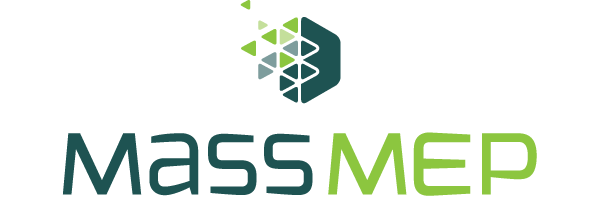Operational Preparedness (Continuity & Contingency) Training with Exolytic and Safety Trainers – VLOG
- On May 6, 2021
Operational Preparedness (Continuity & Contingency) Training with Exolytic and Safety Trainers
June 1, 3, 15 and 17 from 9AM to Noon – SBDAP Virtual Event
MassMEP: When the pandemic first took hold in 2020, companies began to realize that there many things that they would need to address in order to operate safely and within CDC and OSHA guidelines. They made those changes and may be thinking that as we progress to reopening the country and economy that they are all set. Can you give an overview on how things are once again changing in terms of practices, procedures and guidelines during this transition time?
Darcy Cook, Director of Emergency Management, Safety Trainers: I don’t have a crystal ball, but I can share what we are seeing.
- California is an OSHA state and has already written their state laws related to COVID 19.
- The person in charge and that spearheaded that in California has now been nominated to lead federal OSHA under President Biden. So, whatever they did in California, we are probably going to see that in what the federal regulations will look like.
- We already have a COVID 19 federal law under OSHA that has been submitted and are waiting to see what that will look like. Funds have been reallocated towards OSHA.
- On April 28 the Department of Labor said it’s hiring 160 new employees under the focus of COVID 19 control plans.
- The Department of Labor has already allocated another $10M towards Susan Harwood grants to help get moving on training.
- $100M has been put aside by the American Rescue Plan of 2021 for OSHA to enforce and direct around COVID 19.
- There has been a directive written for a national emphasis program and rolled out on March 15. Every regional office in the US has a document telling them how to enforce and inspect your facility. That means that they don’t need a reason to come to your door right now. COVID is the reason. They will just say ‘I’m here and I want to see if you are compliant.’ The directive is based on two lists, with a focus on healthcare first. Manufacturing is on the second list right behind healthcare.
Companies need to be prepared for what is about to happen.
MassMEP: It sounds like there will continue to be business continuity challenges. Is there a way to put a continuity and contingency plan in place that can be updated as this all unfolds?
Darcy Cook: OSHA wants to know what you have in writing. They also want you to look at what has been written every single year, or sooner, and to be making adjustments, not have it collecting dust on a shelf. That’s also what we’re going to see with the COVID control plans that are required. Unfortunately, some people just went to the Massachusetts website and downloaded the check sheet that MA put out as the COVID control template plan. Checking the boxes and signing your name at the bottom does not make you compliant, and it did not close your gap for risk. If DOL, OSHA, or DPH comes in and looks at this – they’ll tell you that this is not a control plan. Did you write what you did, how you were doing it and train your employees on what those checklist items meant? There was a breakdown in communication about what compliance was when this started. On the subject of safety – a lot of companies did a lot to make their workplaces safe – but they need to be safe and compliant. What is a strong control plan? If you did the check list alone, you are at high risk and need a control plan. If you have a written plan that is less than 14 pages, then you are also at risk. This workshop will help you to prepare a strong control plan.
MassMEP: Tell us about the event coming up on June 1, 3, 15, and 17. I believe it is informational/educational as well as hands-on – can you tell us more about that as well?
Darcy Cook: If you don’t have your ducks in row, if you aren’t ready for this regulation to come out, and if you need to sit and write a control plan, then you need to attend the workshop. It is four days. The first 2 days are open-ended questions that make go through the thinking process, so you know why you are making choices and decisions. Then you’ll also spend 2 days actually doing the work and putting the and decisions into writing. We will also cover 5 other OSHA regulations as well that are impacted by the pandemic. Think about bringing other people from your organization too. You probably want to bring your safety committee with you as well.
To learn more and to register for this event click here.
